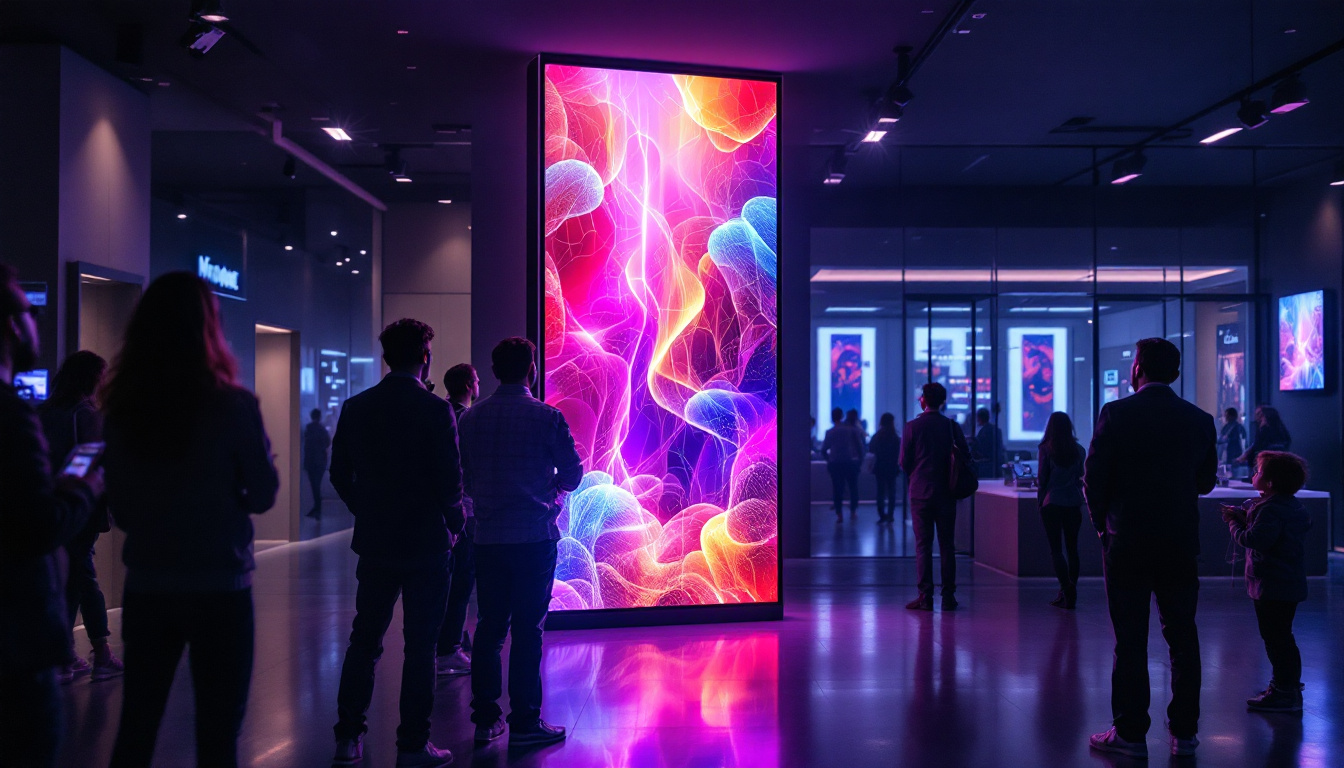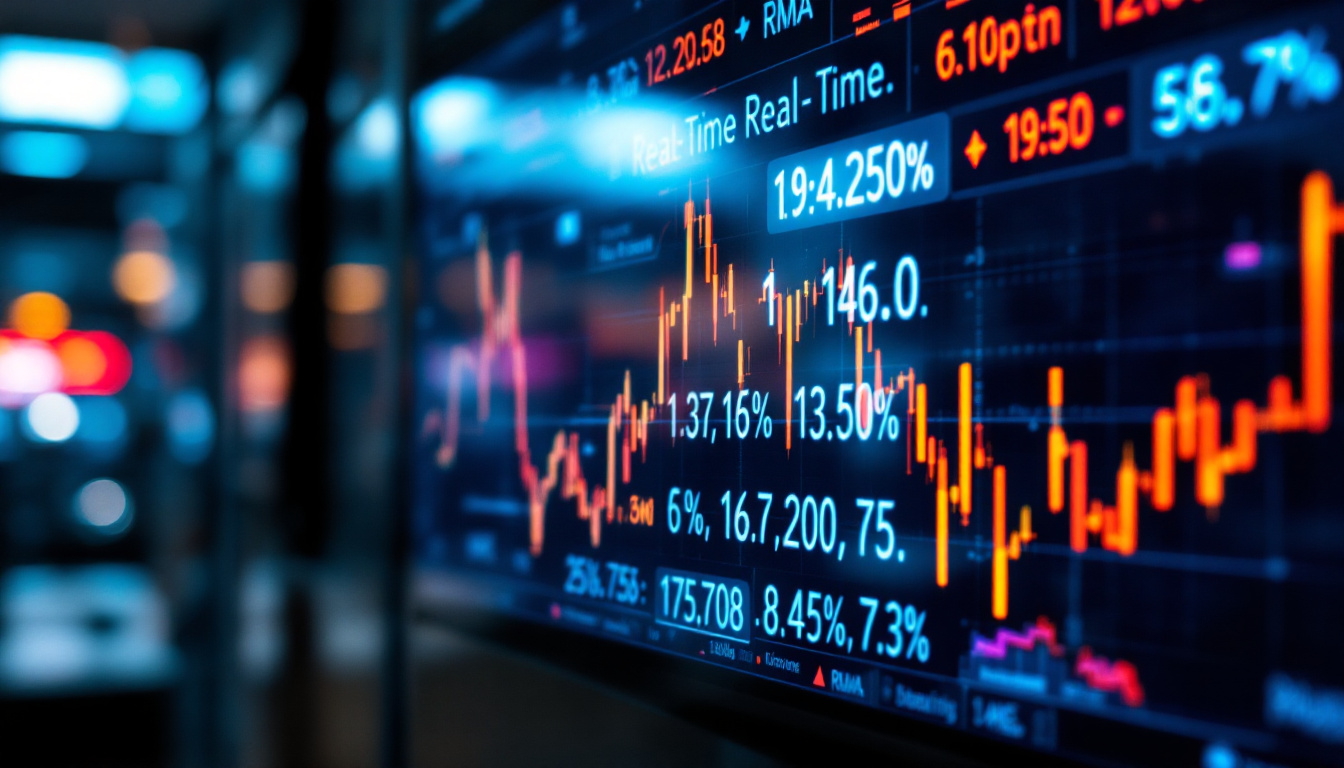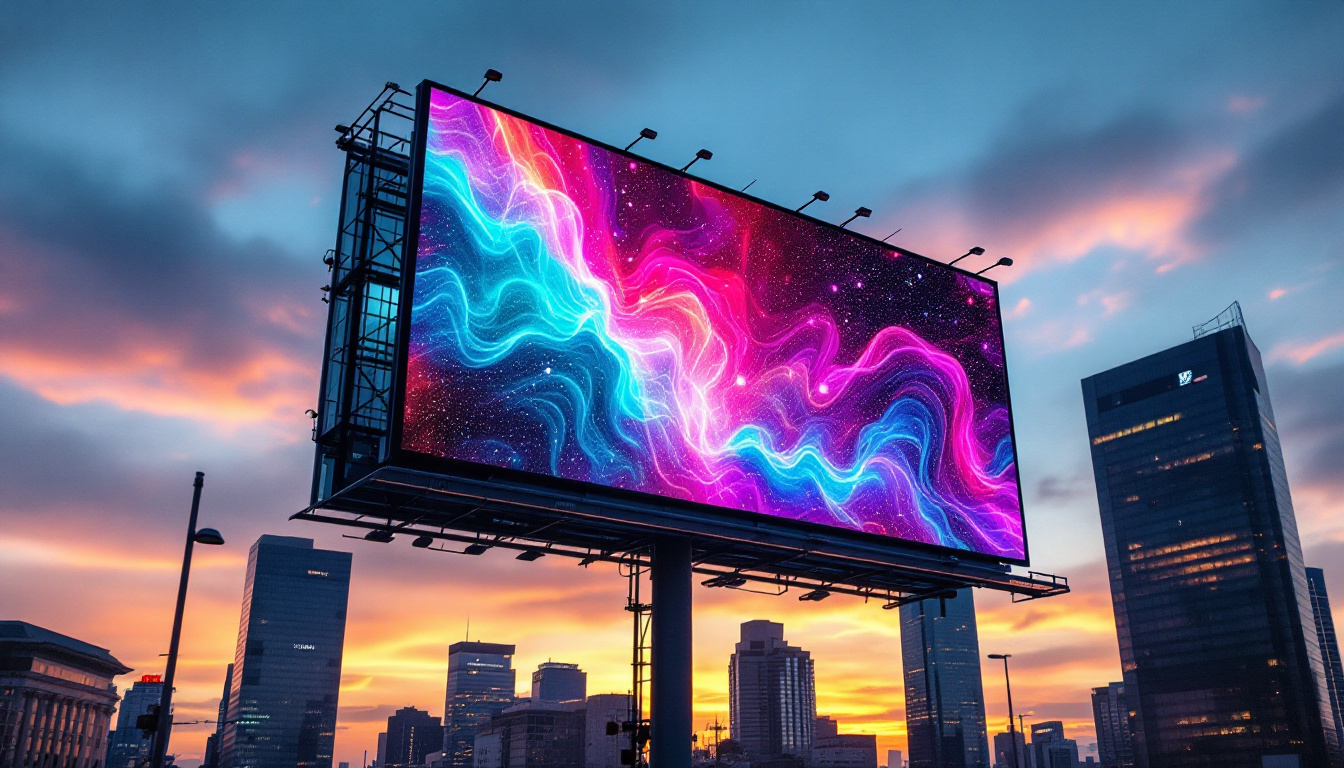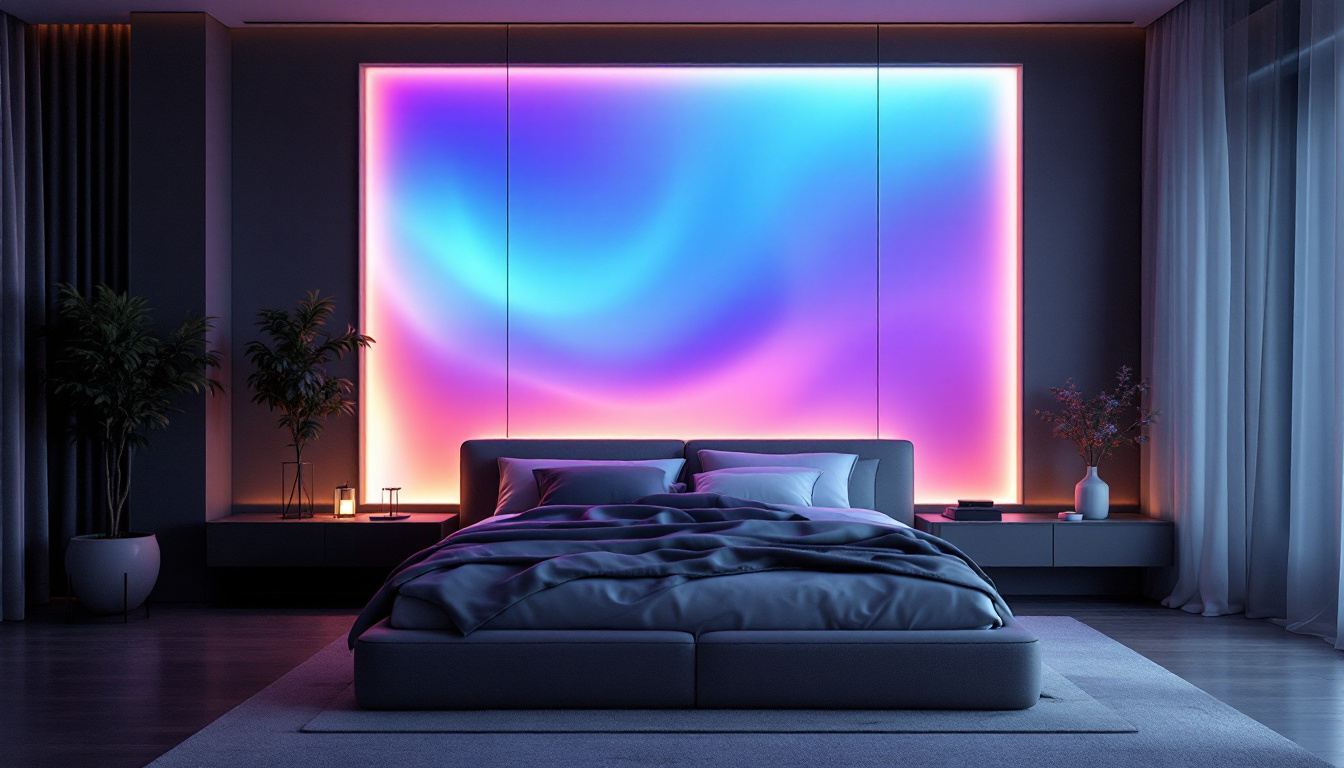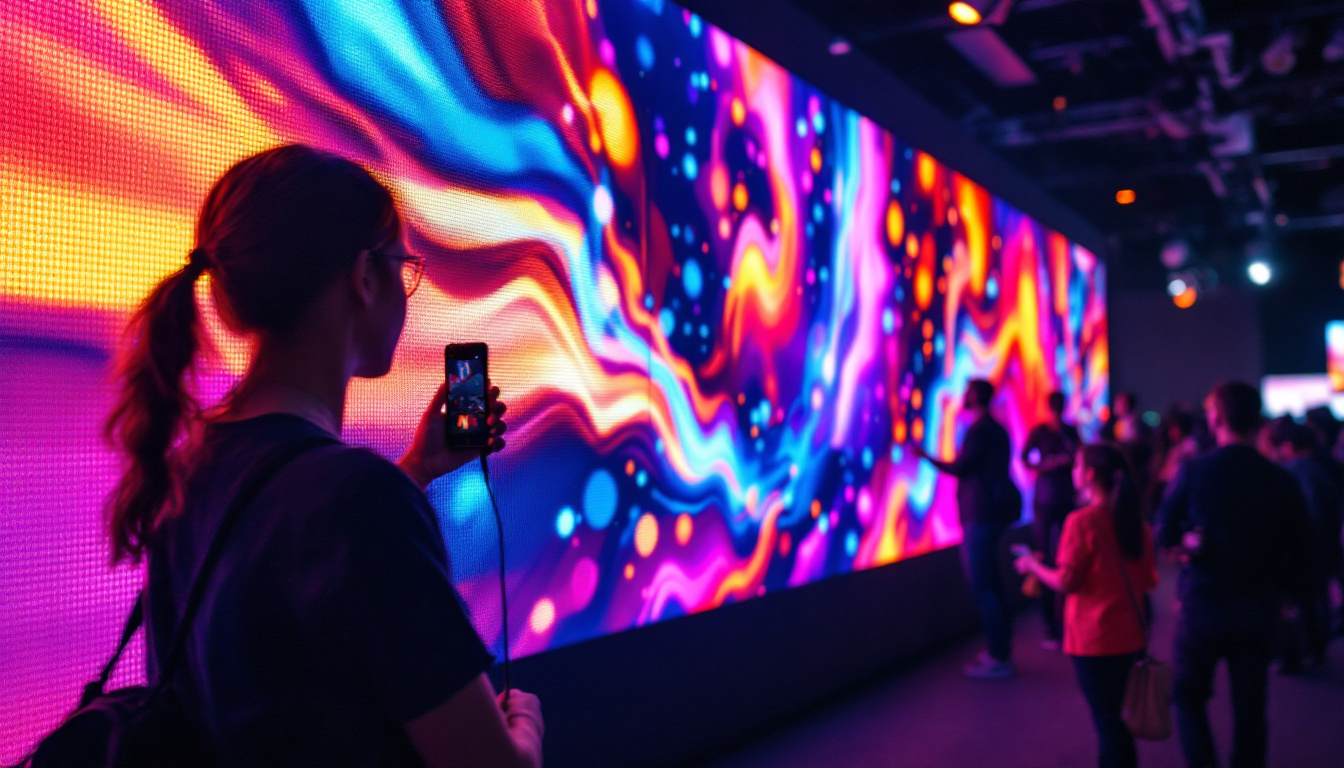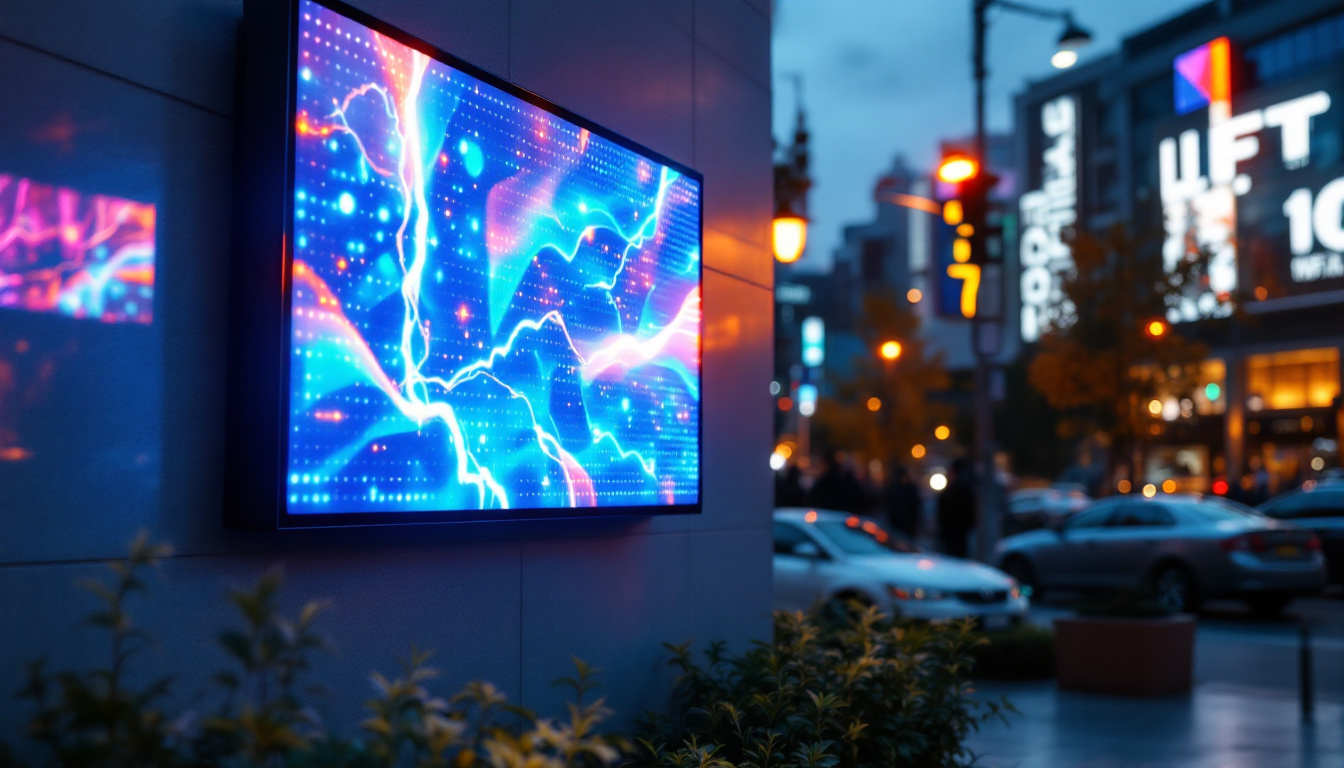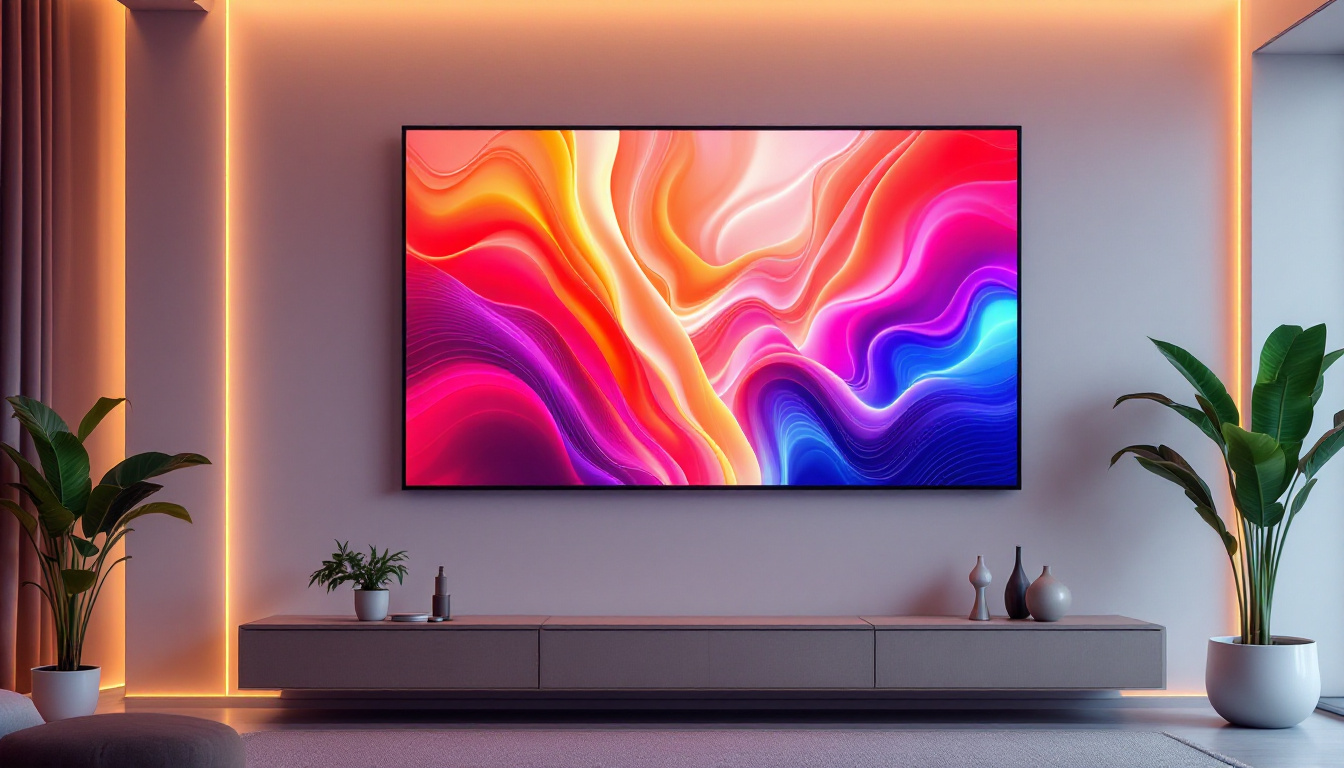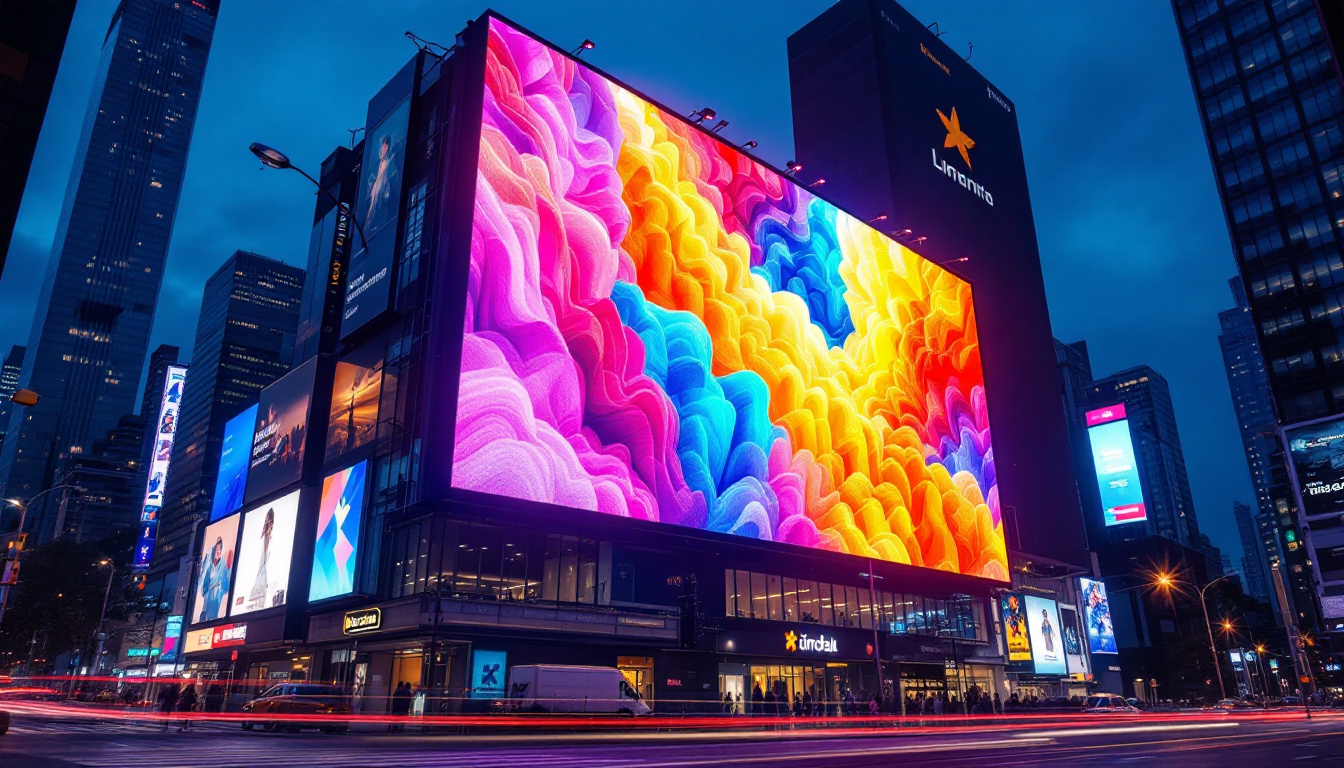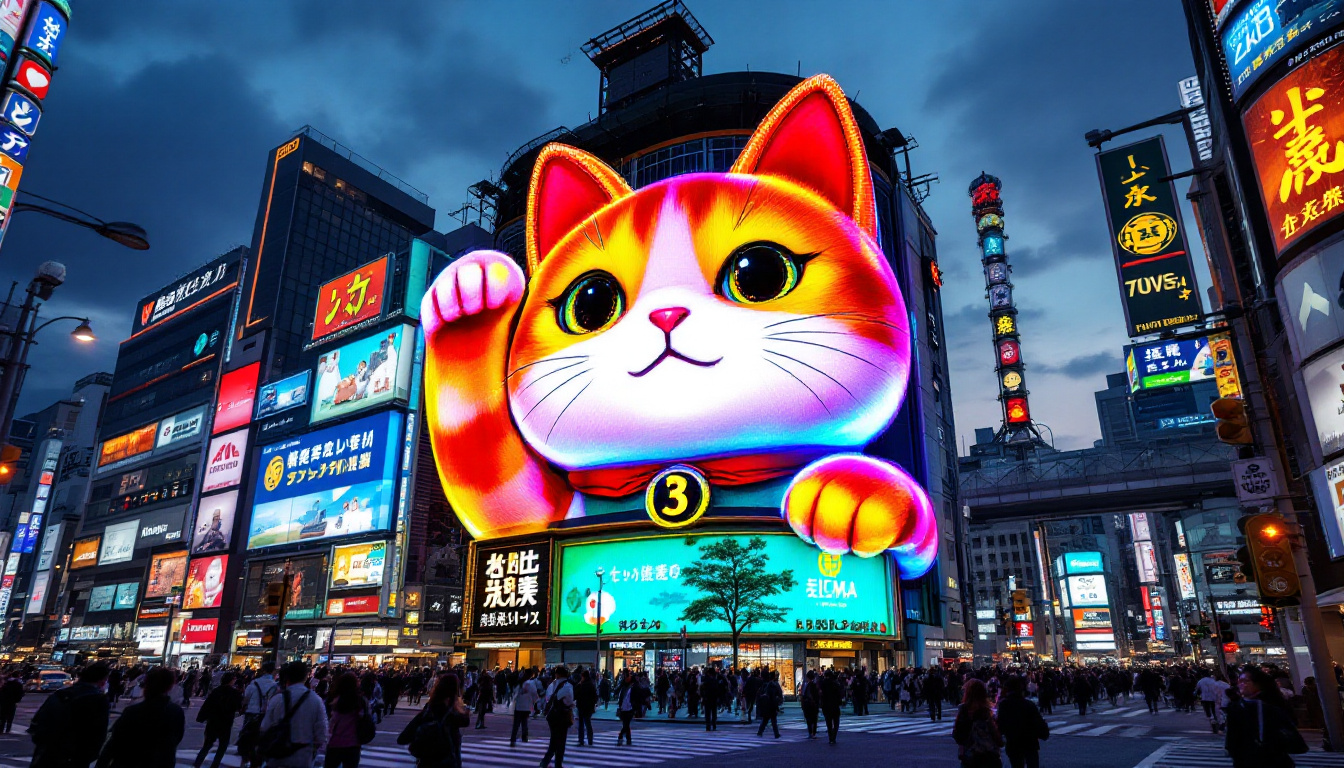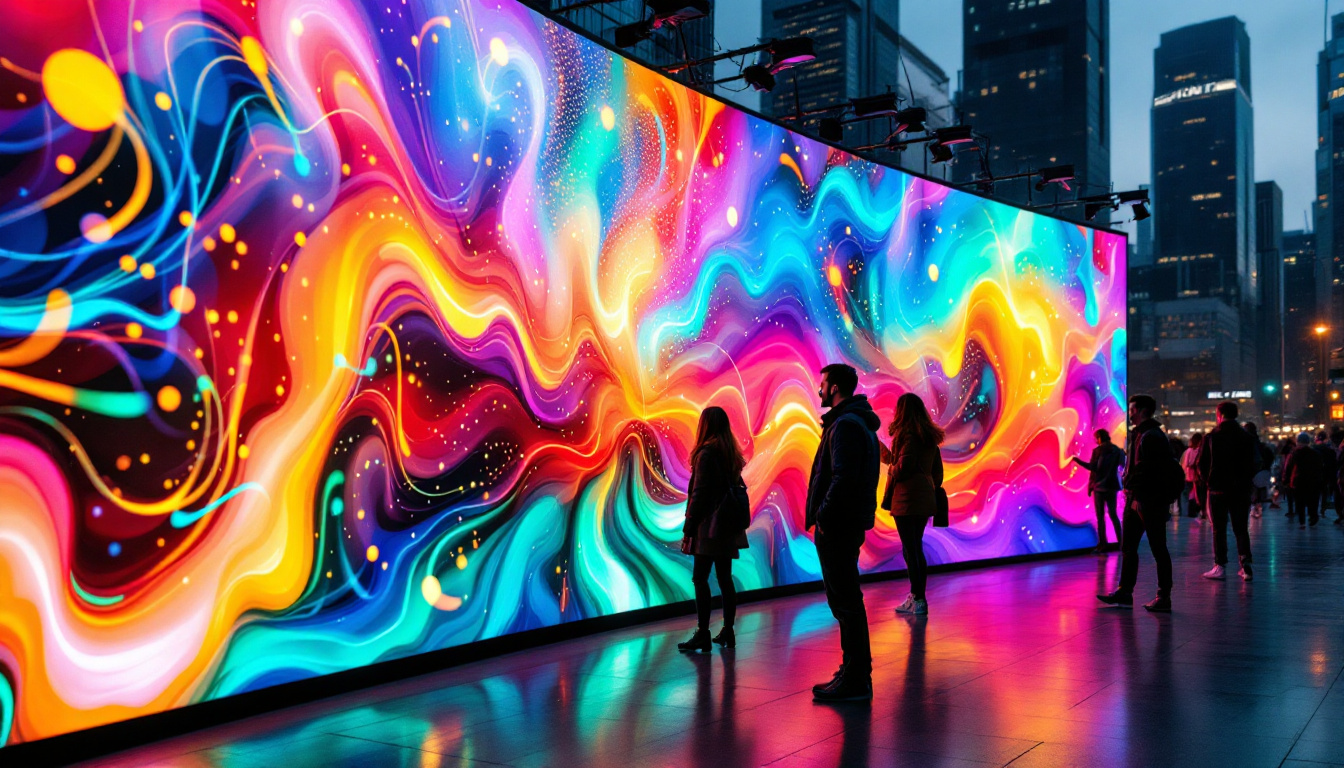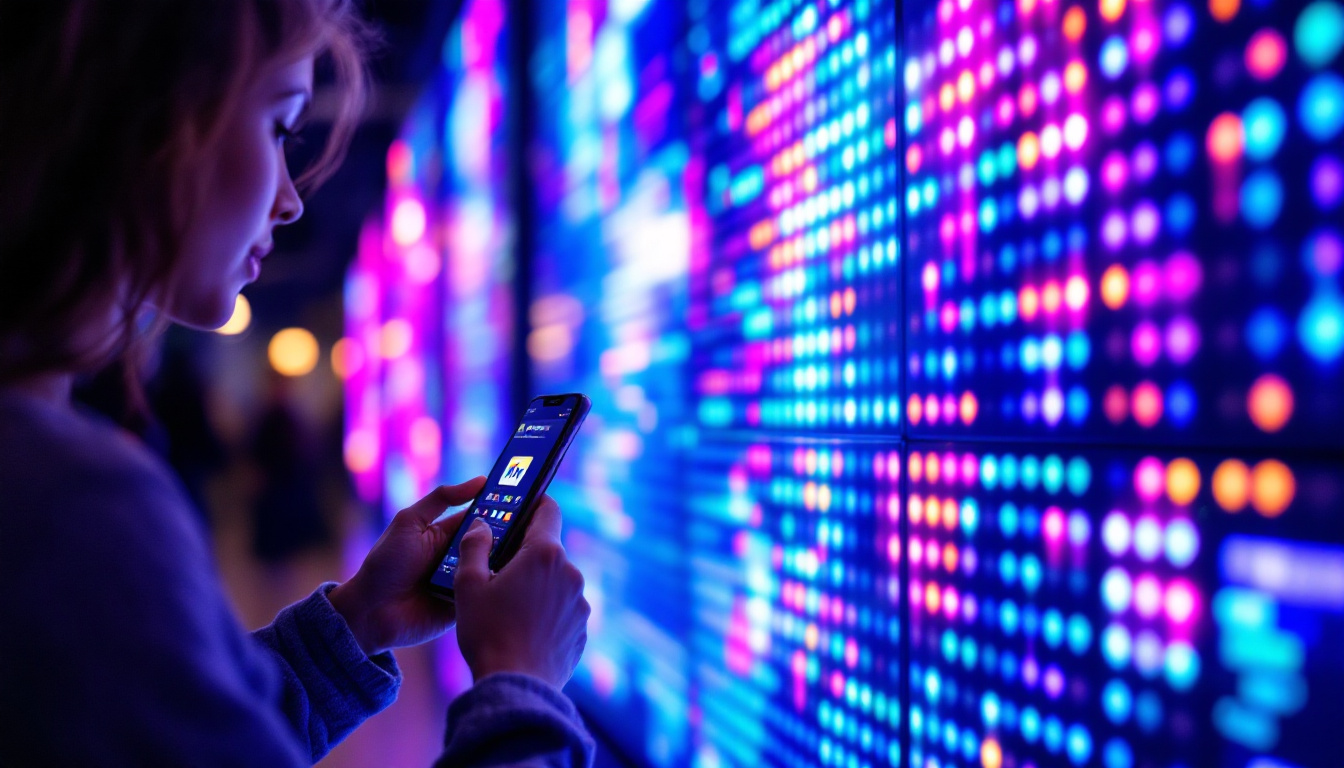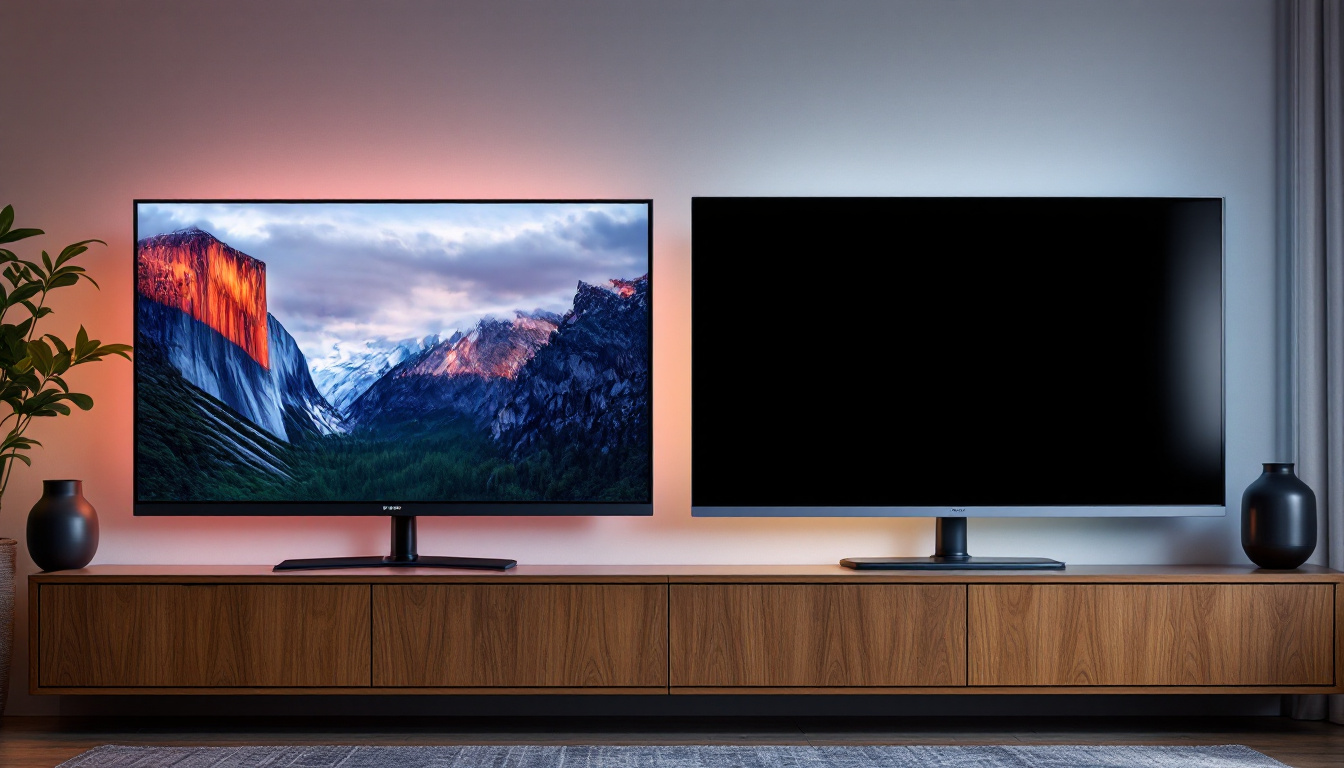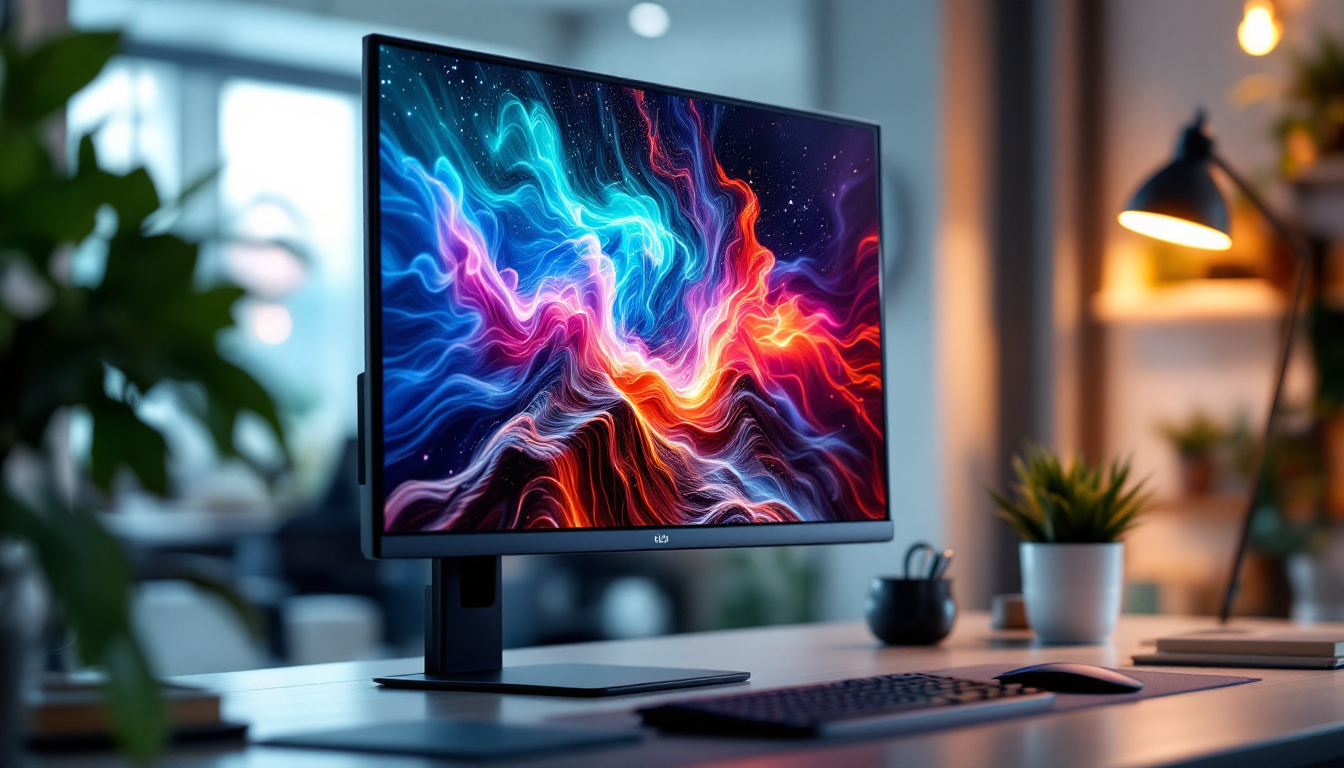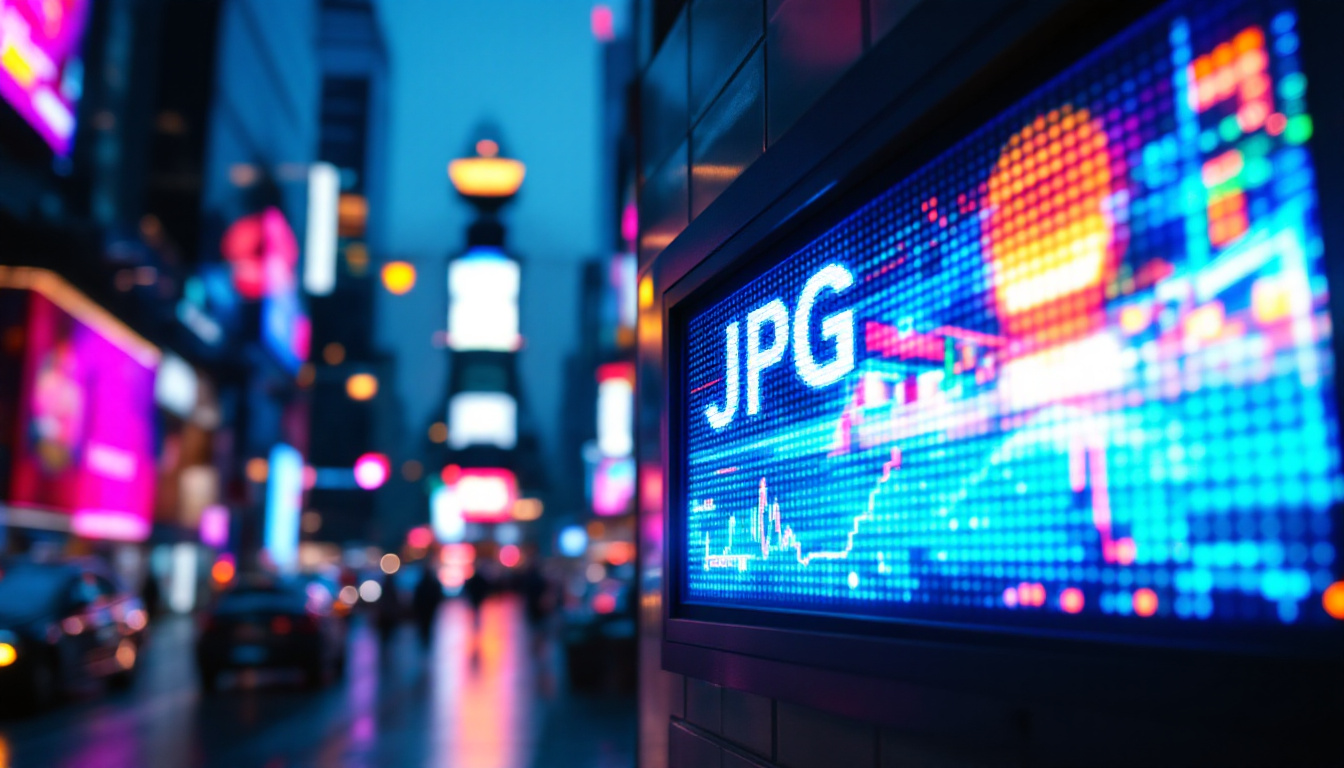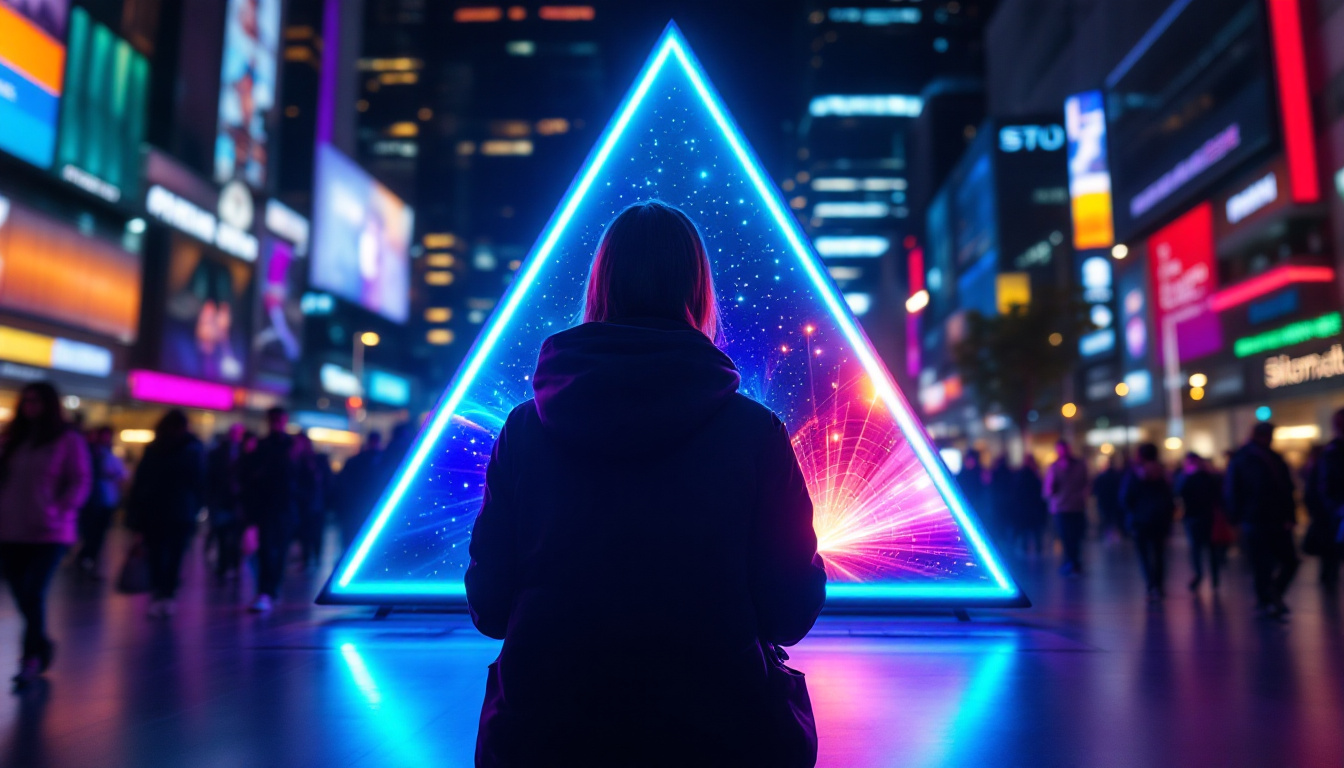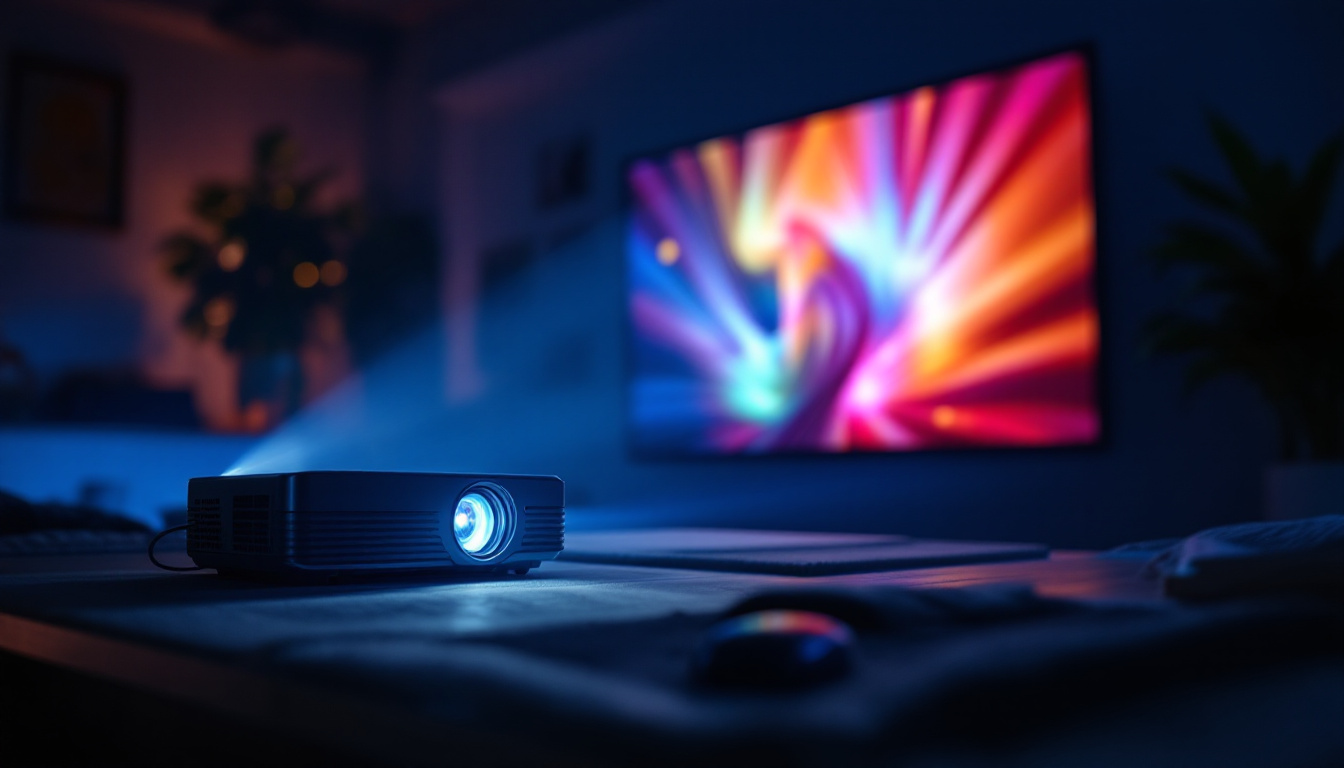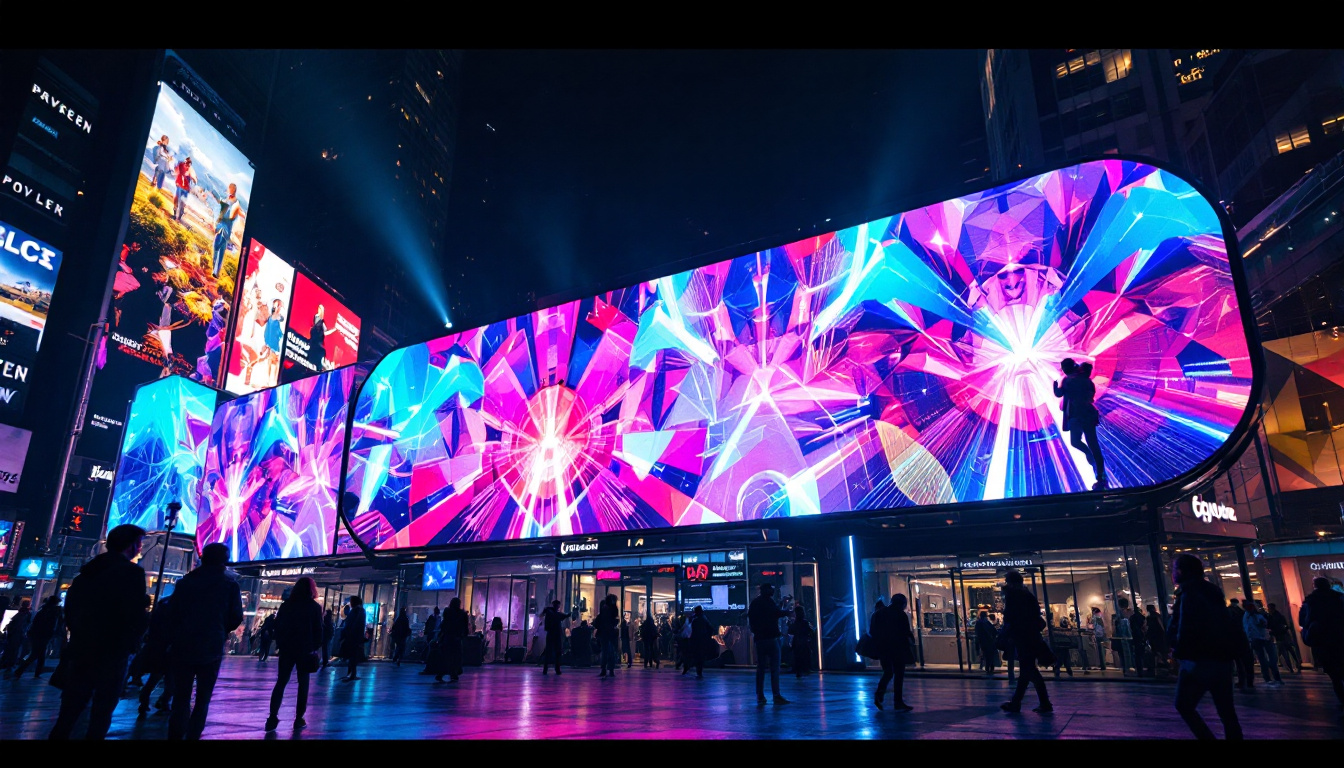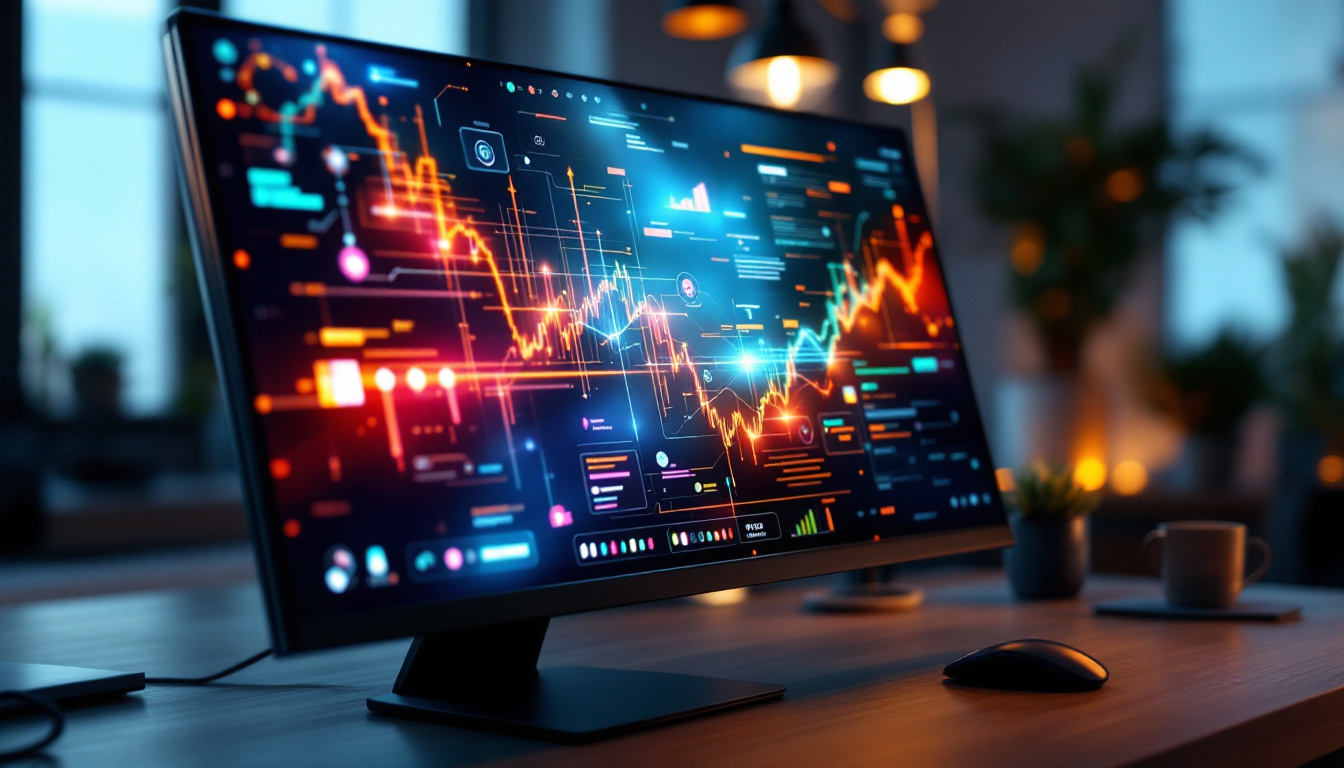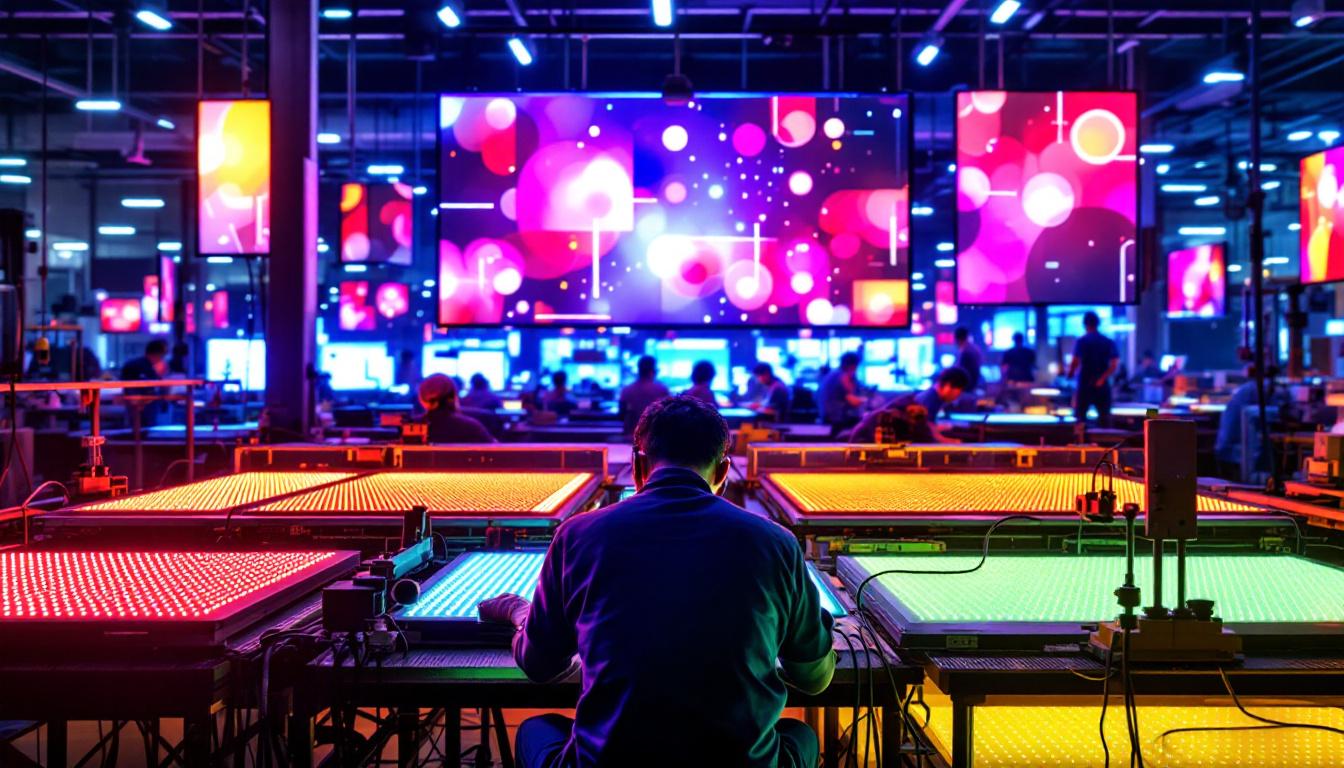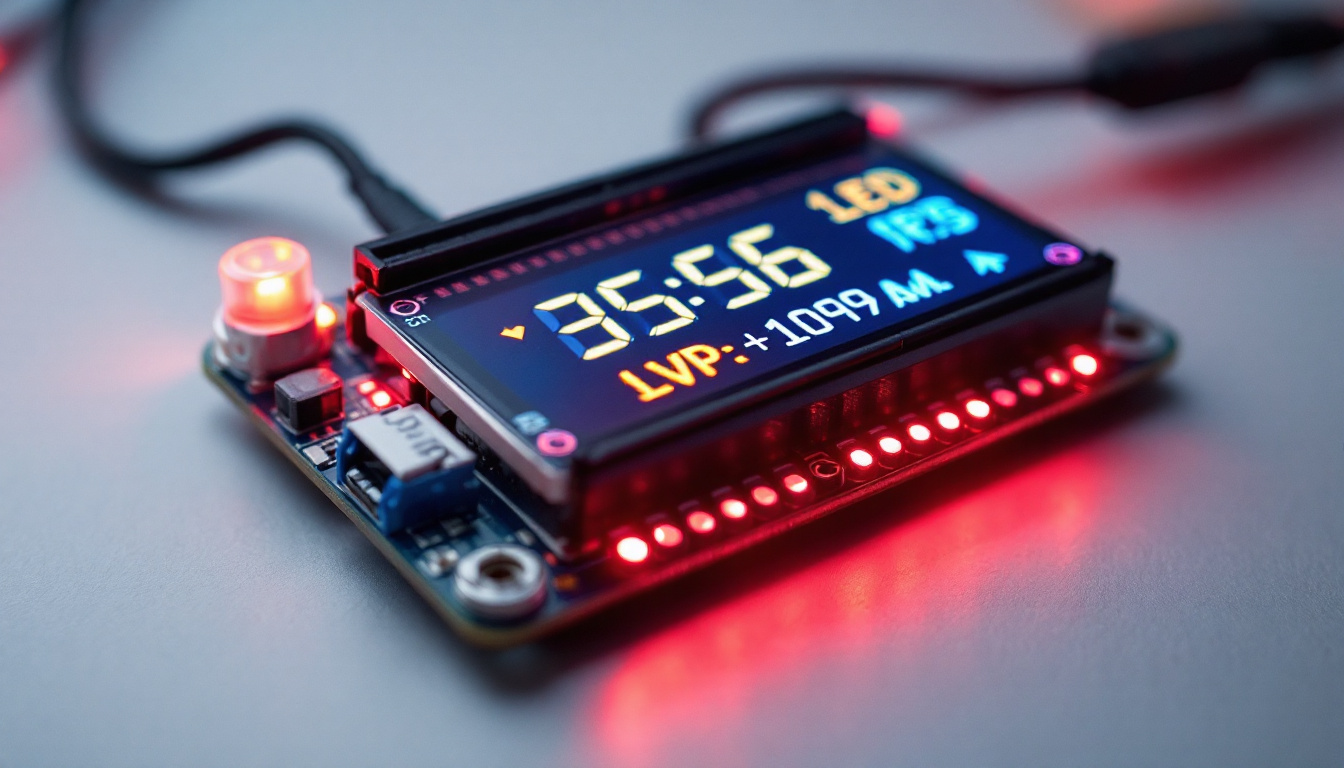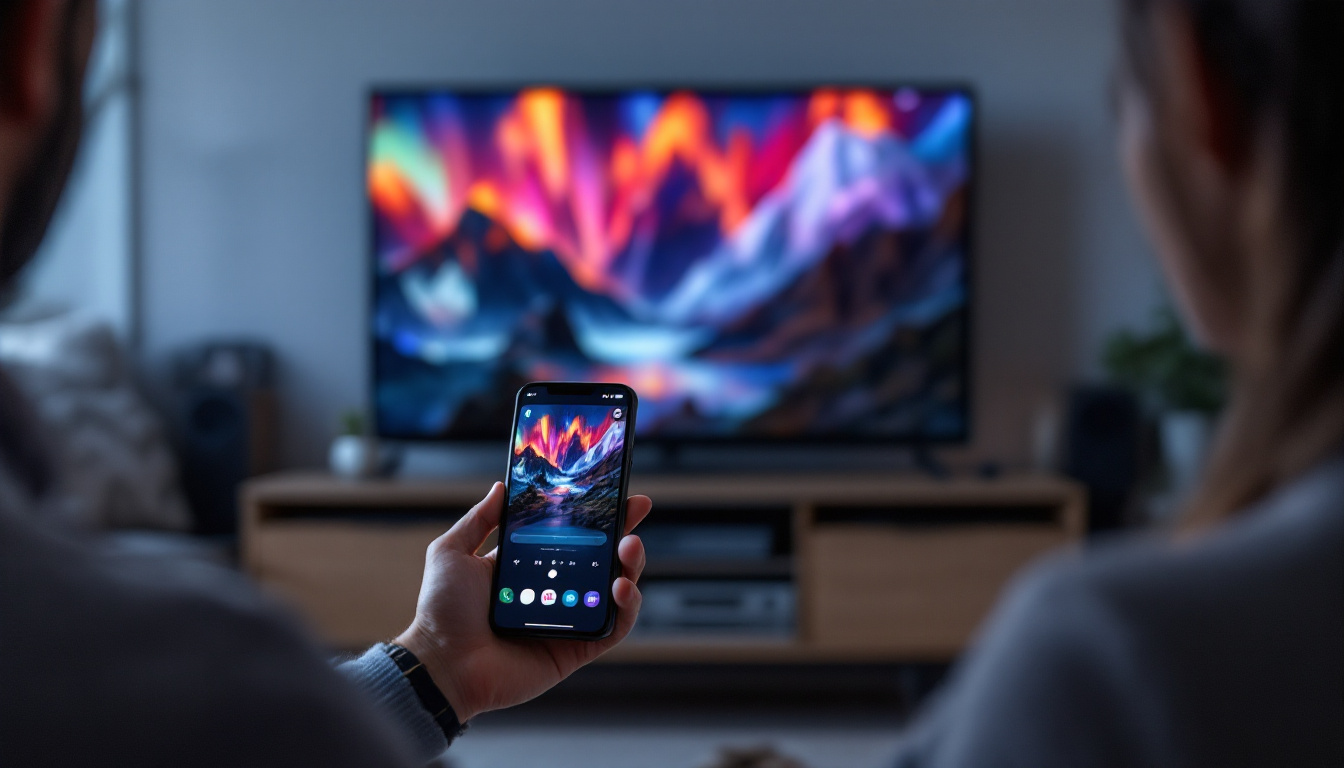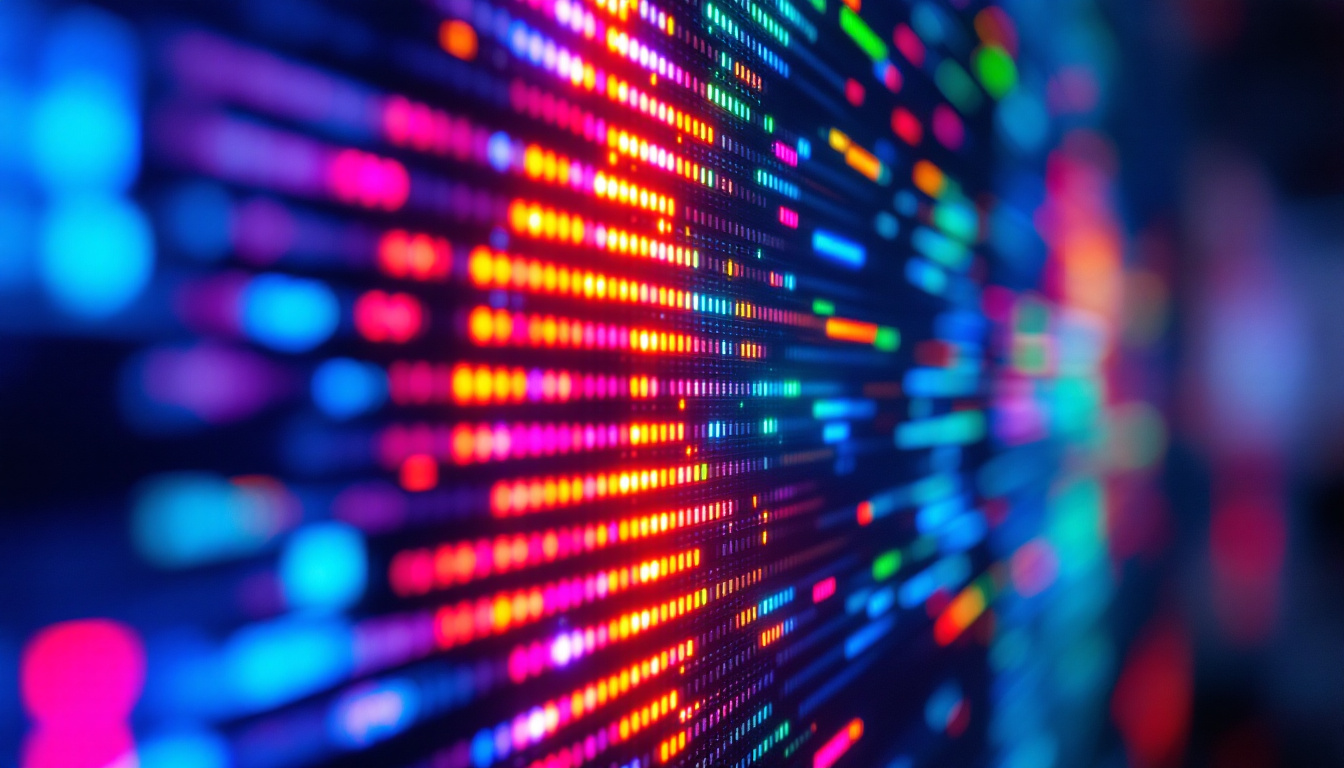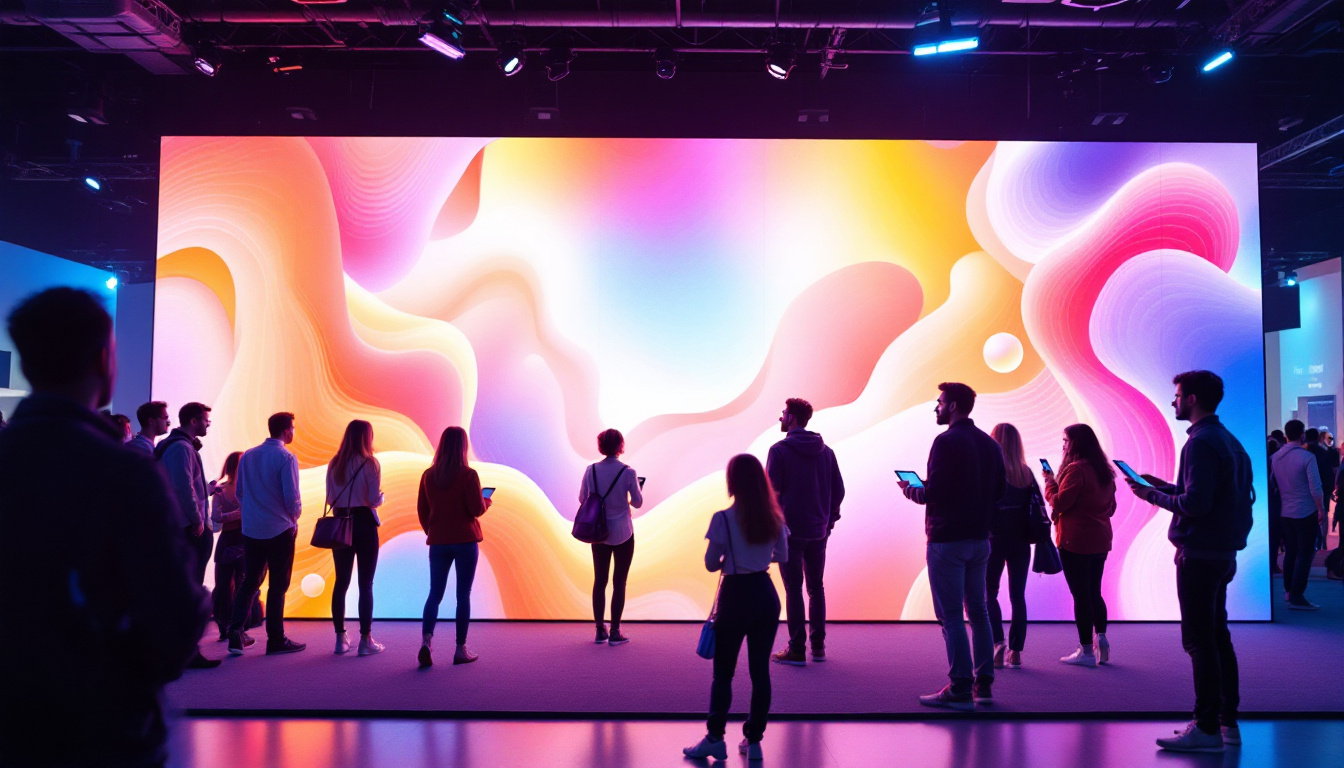Vertical TV Screens: LED Display Explained
In recent years, vertical TV screens have gained immense popularity in various settings, from retail environments to corporate offices. These displays are not only visually striking but also serve a multitude of functions, enhancing the way information is presented and consumed. This article delves into the intricacies of LED displays, particularly in a vertical format, exploring their technology, benefits, applications, and future trends.
Understanding LED Technology
Light Emitting Diode (LED) technology has revolutionized the display industry. Unlike traditional LCD screens, LED displays utilize semiconductor materials to emit light, resulting in brighter images and deeper colors. This section will break down the fundamentals of LED technology and how it applies to vertical screens.
How LED Displays Work
LED displays consist of an array of tiny light-emitting diodes that form pixels. These pixels combine to create images and videos. When electricity passes through the diodes, they emit light in specific colors, which can be adjusted for brightness and intensity. The arrangement of these diodes can vary, leading to different types of LED displays, including full-color and monochrome options.
The technology behind LED displays allows for high contrast ratios, which means that the difference between the darkest and lightest parts of an image is more pronounced. This feature is particularly beneficial for vertical screens, as they are often used in brightly lit environments where visibility is crucial.
Types of LED Displays
There are several types of LED displays, each suited for different applications. The most common types include:
- Direct View LED: These displays use individual LEDs to create images directly, offering exceptional brightness and color accuracy.
- LED-backlit LCD: In this setup, an LCD panel is illuminated by LEDs, providing a good balance between quality and cost.
- Organic LED (OLED): OLED displays use organic compounds to emit light, resulting in thinner screens and improved color reproduction.
Each type has its advantages and disadvantages, but for vertical applications, direct view LED displays are often preferred due to their superior performance in various lighting conditions.
The Advantages of Vertical TV Screens
Vertical TV screens offer several advantages that make them an appealing choice for businesses and organizations. Their unique orientation and the technology behind them can enhance viewer engagement and improve communication. Here are some key benefits:
Enhanced Visibility
One of the primary advantages of vertical TV screens is their visibility. The vertical format is more natural for human viewing, particularly in crowded spaces. People are accustomed to seeing vertical images, such as posters and billboards, which makes vertical screens more engaging.
In retail environments, vertical displays can be strategically placed to capture the attention of passersby. They can showcase products, advertisements, or promotions in a way that is more eye-catching compared to traditional horizontal displays.
Space Efficiency
Vertical screens can also be more space-efficient. In areas where horizontal space is limited, vertical displays can fit into narrower spaces without compromising the size of the content being displayed. This versatility allows businesses to maximize their advertising or informational displays without requiring extensive renovations or alterations to existing layouts.
Moreover, vertical screens can be stacked or arranged in creative configurations, allowing for dynamic installations that can further enhance visual appeal.
Improved Content Delivery
The vertical orientation of these screens allows for better content delivery, especially for specific types of information. For instance, social media feeds, news tickers, and event schedules can be displayed more effectively in a vertical format. This makes it easier for viewers to consume information quickly and efficiently.
Additionally, vertical screens can be used to create immersive experiences. By combining multiple vertical displays, businesses can create a cohesive visual narrative that draws viewers in and keeps them engaged.
Applications of Vertical LED Displays
Vertical LED displays have found applications across various industries, each leveraging the unique advantages of this technology. From retail to corporate environments, the versatility of vertical screens makes them a valuable asset. Here are some notable applications:
Retail Advertising
In retail environments, vertical LED displays are often used for advertising and promotions. They can showcase new products, highlight sales, or provide information about upcoming events. The ability to change content quickly and easily allows retailers to adapt their messaging in real-time, ensuring that customers receive the most relevant information.
Moreover, vertical displays can be used to create interactive experiences. Touchscreen capabilities can be integrated, allowing customers to browse products, access additional information, or even make purchases directly from the screen. This interactivity enhances customer engagement and can lead to increased sales.
Corporate Communication
In corporate settings, vertical displays are increasingly being used for internal communication. They can be placed in lobbies, conference rooms, or break areas to convey important messages, such as company news, employee recognition, or event schedules. This not only keeps employees informed but also fosters a sense of community within the organization.
Furthermore, vertical screens can be used for presentations and video conferencing. Their unique orientation allows for better visibility in larger rooms, ensuring that all participants can see the content being shared. This can enhance collaboration and communication among team members.
Public Information Displays
Vertical LED displays are also commonly used in public spaces to provide information to the general public. Airports, train stations, and bus terminals often utilize these screens to display arrival and departure times, wayfinding information, and emergency alerts. The clarity and brightness of LED technology ensure that information is easily readable, even in challenging lighting conditions.
Additionally, vertical displays can be used in educational settings, such as schools and universities, to share announcements, schedules, and event information. This can enhance the overall learning environment by keeping students and staff informed.
Challenges and Considerations
While vertical LED displays offer numerous benefits, there are also challenges and considerations that organizations must take into account when implementing this technology. Understanding these factors can help ensure successful deployment and optimal performance.
Cost Implications
One of the primary challenges associated with vertical LED displays is the initial cost. High-quality LED technology can be expensive, and organizations must weigh the potential return on investment against the upfront costs. Budget constraints may limit the ability to purchase the latest technology, leading some businesses to opt for lower-quality alternatives that may not deliver the same performance.
However, it is essential to consider the long-term benefits of investing in high-quality displays. Improved visibility, enhanced customer engagement, and increased sales can offset the initial costs over time, making it a worthwhile investment.
Installation and Maintenance
Installation of vertical LED displays can be complex, particularly in environments with specific spatial constraints. Organizations must ensure that the screens are mounted securely and positioned for optimal visibility. This may require professional installation services, adding to the overall cost.
Maintenance is another critical consideration. LED displays require periodic maintenance to ensure optimal performance. Dust, debris, and environmental factors can affect the display quality over time. Organizations must establish a maintenance schedule and allocate resources for repairs and servicing to keep the displays functioning effectively.
Content Management
Effective content management is crucial for maximizing the impact of vertical LED displays. Organizations must have a strategy in place for creating, updating, and managing content. This may involve using specialized software or content management systems to streamline the process.
Additionally, organizations should consider the types of content that will be displayed. Engaging visuals, clear messaging, and timely updates are essential for maintaining viewer interest. Regularly refreshing content can help ensure that the displays remain relevant and effective.
The Future of Vertical LED Displays
The future of vertical LED displays looks promising, with advancements in technology and design continuing to evolve. As businesses seek innovative ways to engage their audiences, vertical screens are likely to play an increasingly significant role. Here are some trends to watch in the coming years:
Integration with Smart Technology
As smart technology becomes more prevalent, vertical LED displays are expected to integrate seamlessly with other devices and systems. This could include connectivity with smartphones, IoT devices, and data analytics tools, allowing for more personalized and targeted content delivery.
For instance, retailers could use data from customer interactions to tailor advertising content based on individual preferences. This level of personalization can significantly enhance the effectiveness of marketing efforts and improve customer experiences.
Advancements in Display Quality
Technological advancements will continue to improve the quality of vertical LED displays. Innovations such as higher resolution, better color accuracy, and improved energy efficiency are on the horizon. These enhancements will not only elevate the visual experience but also reduce operational costs for organizations.
Furthermore, developments in flexible LED technology may lead to more creative display options, allowing for unique shapes and configurations that can fit into a variety of environments.
Increased Focus on Sustainability
As sustainability becomes a priority for many organizations, the demand for eco-friendly display solutions is likely to rise. Manufacturers are already exploring ways to reduce the environmental impact of LED displays, such as using recyclable materials and energy-efficient components.
This shift towards sustainability will not only benefit the environment but also resonate with consumers who are increasingly conscious of their purchasing decisions. Organizations that prioritize eco-friendly practices may gain a competitive edge in the market.
Conclusion
Vertical TV screens, particularly those utilizing LED technology, offer a dynamic and effective solution for a wide range of applications. Their enhanced visibility, space efficiency, and ability to deliver engaging content make them a valuable asset for businesses and organizations. While challenges such as cost and maintenance exist, the benefits often outweigh these considerations.
As technology continues to evolve, vertical LED displays are poised to play an even more significant role in shaping the way information is presented and consumed. By staying informed about the latest trends and advancements, organizations can leverage this technology to enhance their communication strategies and engage their audiences effectively.
Discover LumenMatrix’s Innovative LED Solutions
Ready to elevate your space with the dynamic and engaging power of vertical LED displays? LumenMatrix is at the forefront of LED display technology, offering a wide array of solutions tailored to your unique needs. From captivating Indoor LED Wall Displays to versatile Outdoor LED Wall Displays, and from mobile Vehicle LED Displays to interactive Floor LED Displays, our products are designed to revolutionize your visual communication. Experience the future of digital signage with LumenMatrix and create unforgettable visual experiences that resonate with your audience. Check out LumenMatrix LED Display Solutions today and transform the way you share your message.

